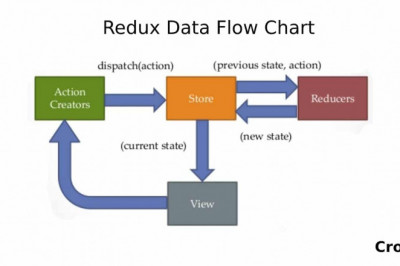views

DevOps is the Missing Piece in Your Software Development Puzzle
DevOps is a cultural shift that aims to bridge the gap between development (Dev) and operations (Ops) teams. It's a philosophy that emphasizes collaboration, communication, and automation throughout the entire software development lifecycle. By breaking down silos and fostering a culture of shared responsibility, DevOps enables businesses to deliver software faster, more reliably, and at a lower cost.
Here are some of the key benefits of adopting a DevOps approach:
-
Increased Speed and Agility: DevOps practices like continuous integration and continuous delivery (CI/CD) allow teams to automate the software delivery pipeline. This means that code changes can be integrated, tested, and deployed more frequently, leading to faster release cycles.
-
Improved Quality and Reliability: DevOps emphasizes continuous testing throughout the development process. This helps to identify and fix bugs early on, resulting in higher quality software that is less prone to failures.
-
Enhanced Collaboration: DevOps fosters a collaborative environment where Dev and Ops teams work together as one unit. This improved communication leads to a better understanding of each other's needs and challenges, ultimately resulting in a more efficient development process.
-
Reduced Costs: By automating tasks and streamlining processes, DevOps can help to reduce the overall cost of software development. Additionally, the faster release cycles enabled by DevOps can lead to increased revenue opportunities.
-
Improved Scalability: DevOps principles promote the use of infrastructure as code (IaC). IaC allows for the automation of infrastructure provisioning and management, making it easier to scale applications up or down as needed.
How to Implement DevOps:
There's no one-size-fits-all approach to implementing DevOps. However, there are some key steps that organizations can take to get started:
-
Break Down Silos: The first step is to break down the traditional barriers between Dev and Ops teams. Encourage communication and collaboration between these teams, and work towards a shared set of goals.
-
Automate Everything You Can: Identify repetitive tasks in the development and deployment process and automate them using tools like CI/CD pipelines and configuration management tools.
-
Embrace Continuous Feedback: Continuously gather feedback from all stakeholders throughout the development process. This feedback can be used to improve the quality of the software and identify areas for improvement.
-
Invest in the Right Tools: There are a wide variety of DevOps tools available that can help to automate tasks, improve communication, and streamline the development process. Invest in the tools that best suit your organization's needs.












